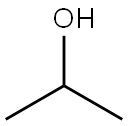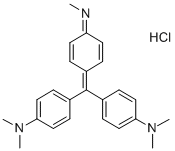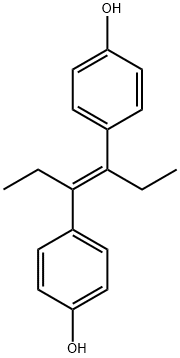alpha-Terpineol
Synonym(s):alpha-Terpineol
- CAS NO.:98-55-5
- Empirical Formula: C10H18O
- Molecular Weight: 154.25
- MDL number: MFCD00001557
- EINECS: 202-680-6
- SAFETY DATA SHEET (SDS)
- Update Date: 2025-12-26 12:07:08

What is alpha-Terpineol?
Description
α-Terpineol is a terpene alcohol that is found in natural oils such as pine oil and petitgrain (the oil from the bitter orange tree). It is the most common of four structural isomers; the others are β-, γ-, and 4-terpineol. It should not be confused with terpinol, the hydrate of terpin, a terpene diol.
α-Terpineol is a racemic mixture of (R)-(+)- and (S)-(–)-enantiomers. Both are found in nature; but the article of commerce, which is usually synthesized from α-pinene, is the racemate. In 1903, German chemists H. Waldbaum and O. Hüthig isolated the (+)-stereoisomer from petitgrain. Four years later, J. E. Teeple of New York City separated its enantiomer from?long-leaf pine oil.
The lilac-like aroma of α-terpineol makes it a desirable ingredient for perfumes and cosmetics. This time of year, people burn α-terpineol-scented candles for their piney scent. Whatever your favorite aroma during the holidays, enjoy the season!
Chemical properties
Clear colorless liquid after melting
Chemical properties
α-Terpineol is a colorless,
crystalline solid, smelling of lilac. The most important commercial grade of
terpineol consists of a liquid mixture of isomers that contains mainly α-terpineol
and a considerable amount of ?γ-terpineol. This mixture has a stronger lilac odor
than does pure crystalline α-terpineol.
Hydrogenation of α-terpineol yields p-menthan-8-ol. Terpineol is readily dehydrated
by acids, yielding a mixture of unsaturated cyclic terpene hydrocarbons.
Under mildly acidic conditions, terpin hydrate is formed. The most important reaction for the fragrance industry is esterification, particularly acetylation to terpinyl
acetate.
Terpineol with its typical lilac odor is one of the most frequently used fragrance
substances. It is stable and inexpensive and is used in soaps and cosmetics.
Chemical properties
α-Terpineol has a characteristic lilac odor with a sweet taste reminiscent of peach on dilution.
Occurrence
Reported found in more than 150 derivatives from leaves, herbs and flowers; the d-, l- and dl-isomers are known: the d-form is found in the essential oils from Cupressaceae in general; also in the oils of Elettaria cardamomum, star anise, marjoram, clary sage, neroli and others. The l-form is found in Satureia montana, lavandin, cajeput, lime, lemon, cinnamon leaves and the distillates from Pinaceae (with exception of Pinus silvestris, which contains d-terpineol together with racemic form); likewise, Nectandra elaiophora (wood) and petitgrain bigarade. The racemic form is found in cajenne linalool, Thymus caespititius, cajeput, Eucalyptus globulus; mixed with the l-form it is found in petitgrain; a nondefined form of terpineol has been reported in the bitter orange. Reported found in over 260 natural sources including apple, apple juice, apricot, sweet and sour cherry, citrus peel oils and juices, orange, lemon, lime, grapefruit, tangerine, mandarin peels oils and juices, bergamot, cranberry, blueberry, black currant, raspberry, strawberry, guava, grapes, raisin, melon, papaya, peach, pear, pineapple, carrot, celery, peas, potato, bell pepper, tomato, anise, cinnamon, clove, cumin seed, ginger, Mentha oils, pepper, mace, parsley, nutmeg, thyme, Gruyere cheese, parmesan cheese, butter, cooked chicken and beef, hop oil, beer, cognac, rum, wines, tea, nuts, honey, avocado, passion fruit, prune, plums, beans, mushroom, sweet and wild marjoram, starfruit, mango, tamarind, parsnip root, cardamom, coriander seed, rice, quince, litchi, calamus, dill, licorice, lovage root, juniper berry, corn oil, laurel, sweet and bitter fennel, wort, elderberry, loquat, myrtle berry, rosemary, buchu oil, Bourbon vanilla, mountain papaya, turmeric, clary sage, lemon balm, nectarines, naranjilla fruit, cape gooseberry and sea buckthorn.
The Uses of alpha-Terpineol
A naturally-occuring monoterpene alcohol.Alpha-terpineol is used as an antioxidant, antiseptic, antihypernociception and anti-inflammatory. It is also used as a solvent. It is an important ingredient of pine oil disinfectants. Further, it is used as a fragrance in perfumes, fat denaturant for soap production and synthetic flavoring agent.
The Uses of alpha-Terpineol
Shows antioxidant effects. Antiseptic. is present in many extracted oils of various plant species, acts as an antihypernociception and anti-inflammatory.
What are the applications of Application
α-Terpineol is a monoterpene alcohol and a terpenoid building block for proteomic research and is a
Definition
ChEBI: A terpineol that is propan-2-ol substituted by a 4-methylcyclohex-3-en-1-yl group at position 2.
Preparation
Although α-terpineol occurs in many essential oils, only small
quantities are isolated, for example, by fractional distillation of pine oils.
A common industrial method of α-terpineol synthesis consists of the hydration
of α-pinene or turpentine oil with aqueous mineral acids to give crystalline
cis-terpin hydrate (mp 117 °C), followed by partial dehydration to α-terpineol.
Suitable catalysts are weak acids or acid-activated silica gel.
Selective conversion of pinene, 3-carene, and limonene or dipentene to terpineol,
without terpin hydrate formation is also used. Addition of organic acids (weak
acids require catalytic amounts of mineral acids) produces terpinyl esters, which
are subsequently hydrolyzed to terpineol, sometimes in situ.
Aroma threshold values
Detection: 280 to 350 ppb. Aroma characteristics in 1% ethanol: pine-like, woody and resinous with a slight cooling lemon and lime citrus nuance, and a floral dry out.
Taste threshold values
Taste characteristics at 2 to 25 ppm: woody, terpy, lemon and lemon–lime-like with a slight herbal and floral nuance. Taste characteristics at 10 to 25 ppm: citrus woody with a lemon and lime nuance. It has a slight soapy mouthfeel.
General Description
α-Terpineol is a monoterpene alcohol. It is one of the components responsible for the antifungal activity of Melaleuca alternifolia (tea tree) essential oil. The reaction rate constant of α-terpineol with OH radical and ozone was found to be (1.9±0.5)×10-10cm3 molecule-1s-1 and (3.0±0.2)×10-16cm3 molecule-1s-1, respectively.
Flammability and Explosibility
Non flammable
Synthesis
Obtained from terpin hydrate by splitting off water; from pentane tricarboxylic acid by cyclization, followed by esterification to the hydroxy ester, then the unsaturated ester and Grignard to terpineol; also from isoprene and methyl vinyl ketone, using methyl magnesium iodide.
Properties of alpha-Terpineol
| Melting point: | 31-35 °C (lit.) |
| Boiling point: | 217-218 °C (lit.) |
| Density | 0.93 g/mL at 25 °C (lit.) |
| vapor pressure | 6.48Pa at 23℃ |
| FEMA | 3045 | ALPHA-TERPINEOL |
| refractive index | 1.482-1.485 |
| Flash point: | 90 °C |
| storage temp. | 2-8°C |
| solubility | 0.71g/l |
| form | Liquid After Melting |
| appearance | colorless liquid |
| pka | 15.09±0.29(Predicted) |
| Specific Gravity | 0.9386 |
| color | Clear colorless |
| Odor | at 100.00 %. pine terpene lilac citrus woody floral |
| Water Solubility | negligible |
| Merck | 14,9171 |
| JECFA Number | 366 |
| BRN | 2325137 |
| Dielectric constant | 2.8(20℃) |
| CAS DataBase Reference | 98-55-5(CAS DataBase Reference) |
| NIST Chemistry Reference | 3-Cyclohexene-1-methanol, «alpha»,«alpha»4-trimethyl-(98-55-5) |
| EPA Substance Registry System | .alpha.-Terpineol (98-55-5) |
Safety information for alpha-Terpineol
| Signal word | Warning |
| Pictogram(s) |
 Exclamation Mark Irritant GHS07 |
| GHS Hazard Statements |
H315:Skin corrosion/irritation H319:Serious eye damage/eye irritation |
| Precautionary Statement Codes |
P264:Wash hands thoroughly after handling. P264:Wash skin thouroughly after handling. P280:Wear protective gloves/protective clothing/eye protection/face protection. P302+P352:IF ON SKIN: wash with plenty of soap and water. P305+P351+P338:IF IN EYES: Rinse cautiously with water for several minutes. Remove contact lenses, if present and easy to do. Continuerinsing. P332+P313:IF SKIN irritation occurs: Get medical advice/attention. P337+P313:IF eye irritation persists: Get medical advice/attention. |
Computed Descriptors for alpha-Terpineol
| InChIKey | WUOACPNHFRMFPN-UHFFFAOYSA-N |
alpha-Terpineol manufacturer
New Products
4,4-Difluoropiperidine hydrochloride tert-butyl 9-methoxy-3-azaspiro[5.5]undecane-3-carboxylate Indole Methyl Resin N-Isopropylurea N,N-Dicyclohexylcarbodiimide(DCC) MELDRUMS ACID 5-METHYLISOXAZOLE-4-CARBOXYLIC ACID Magnessium Bis glycinate Zinc ascorbate 1-bromo-2-butyne 2-acetamidophenol 9(10H)-anthracenone Erythrosin B, 4-Piperidinopiperidine 2-((4-morpholinophenylamino) (methylthio) methylene) malononitrile 2,4-dihydroxybenzaldehyde 3-(4-morpholinophenylamino)-5-amino-1H-pyrazole-4-carbonitrile Methyl 2-methylquinoline-6-carboxylate 2,6-dichloro-4-nitropyridine 4-Bromo-2-chlorobenzonitrile 2-(benzylamino)acetic acid hydrochloride 4-(tert-Butoxycarbonylamino)but- 2-ynoic acid 3,4-dihydro-2H-benzo[b][1,4]dioxepine 1-Phenyl-1-cycloprppanecarboxylicacidRelated products of tetrahydrofuran








You may like
-
 alpha-Terpineol 99%View Details
alpha-Terpineol 99%View Details -
 alpha-Terpineol CAS 98-55-5View Details
alpha-Terpineol CAS 98-55-5View Details
98-55-5 -
 alpha-Terpineol CAS 98-55-5View Details
alpha-Terpineol CAS 98-55-5View Details
98-55-5 -
 alpha-Terpineol CAS 98-55-5View Details
alpha-Terpineol CAS 98-55-5View Details
98-55-5 -
 α-Terpineol CAS 98-55-5View Details
α-Terpineol CAS 98-55-5View Details
98-55-5 -
 α-Terpineol 90%, technical grade CAS 98-55-5View Details
α-Terpineol 90%, technical grade CAS 98-55-5View Details
98-55-5 -
 Alpha-terpineol 95% CAS 98-55-5View Details
Alpha-terpineol 95% CAS 98-55-5View Details
98-55-5 -
 Alpha TerpineolView Details
Alpha TerpineolView Details
98-55-5
